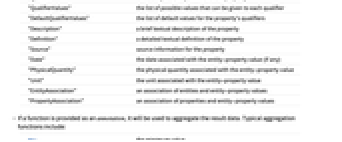-
See Also
- EntityValue
- PlanetData
- PlanetaryMoonData
- DeepSpaceProbeData
-
- Entity Types
- SolarSystemFeature
-
- Interpreter Types
- SolarSystemFeature
- SolarSystemFeatureClass
- ComputedSolarSystemFeature
-
-
See Also
- EntityValue
- PlanetData
- PlanetaryMoonData
- DeepSpaceProbeData
-
- Entity Types
- SolarSystemFeature
-
- Interpreter Types
- SolarSystemFeature
- SolarSystemFeatureClass
- ComputedSolarSystemFeature
-
See Also
SolarSystemFeatureData[entity,property]
gives the value of the specified property for the solar system feature entity.
SolarSystemFeatureData[{entity1,entity2,…},property]
gives a list of property values for the specified feature entities.
SolarSystemFeatureData[entity,property,annotation]
gives the specified annotation associated with the given property.


SolarSystemFeatureData
SolarSystemFeatureData[entity,property]
gives the value of the specified property for the solar system feature entity.
SolarSystemFeatureData[{entity1,entity2,…},property]
gives a list of property values for the specified feature entities.
SolarSystemFeatureData[entity,property,annotation]
gives the specified annotation associated with the given property.
Details




- SolarSystemFeatureData[] gives a list of all solar system feature entities.
- SolarSystemFeatureData["Properties"] gives a list of available properties.
- The specified entity in SolarSystemFeatureData can be an Entity, EntityClass, entity canonical name, or list thereof.
- The specified property can be an EntityProperty, EntityPropertyClass, property canonical name, or list of properties.
- Properties that do not apply or are not known in a particular case are indicated by Missing[…].
- Properties include:
-
"AstronomicalBody" astronomical body on which the feature can be found "AstronomicalBodyCoordinates" coordinate pair with longitude expressed in the convention used on that astronomical body "Elevation" elevation "EndingLatitude" ending latitude "EndingLongitude" ending longitude "FeatureTypeDescription" feature type "Name" name "Position" position of the feature expressed as a GeoPosition "Size" size "StartingLatitude" starting latitude "StartingLongitude" starting longitude - Some properties are available for SolarSystemFeatureData as a whole and can be given using the form SolarSystemFeatureData[property]. Such properties include:
-
"Entities" all available entities "EntityCount" total number of available entities "Classes" all available entity classes "EntityClassCount" total number of available entity classes "SampleEntities" list of sample entities "SampleEntityClasses" list of sample entity classes "EntityCanonicalNames" list of all entity canonical names "PropertyCanonicalNames" list of all property canonical names "EntityClassCanonicalNames" list of all entity class canonical names "RandomEntities" pseudorandom sample entities {"RandomEntities",n} n pseudorandom entities "RandomEntityClasses" pseudorandom sample entity classes {"RandomEntityClasses",n} n pseudorandom entity classes - The following annotations can be used in the third argument of SolarSystemFeatureData[entity,property,annotation]:
-
"Qualifiers" the list of possible qualifiers for the property "QualifierValues" the list of possible values that can be given to each qualifier "DefaultQualifierValues" the list of default values for the property's qualifiers "Description" a brief textual description of the property "Definition" a detailed textual definition of the property "Source" source information for the property "Date" the date associated with the entity-property value (if any) "PhysicalQuantity" the physical quantity associated with the entity-property value "Unit" the unit associated with the entity-property value "EntityAssociation" an association of entities and entity-property values "PropertyAssociation" an association of properties and entity-property values - If a function is provided as an annotation, it will be used to aggregate the result data. Typical aggregation functions include:
-
Min the minimum value Max the maximum value Mean the mean value Commonest the most frequently occurring value Median the median value Total returns the total Length the number of elements
Examples
open all close allBasic Examples (3)
Properties & Relations (8)
SolarSystemFeatureData can be combined with GeoGraphics to create maps:
"GeoBoundingBox" can be used to constrain the range of the map:
Highlight multiple features using GeoDisk:
DeepSpaceProbeData can be used along with features to plot the position of landers:
GeoListPlot can also be used to plot the position of features:
Store the coordinates/sizes of the lunar maria:
Plot the maria together with their names (as tooltips):
SolarSystemFeatureData can be combined with GeoGraphics to obtain topographic maps of the Moon:
SolarSystemFeatureData can be combined with GeoElevationData to create 3D regions of the Moon:
See Also
EntityValue PlanetData PlanetaryMoonData DeepSpaceProbeData
Entity Types: SolarSystemFeature
Interpreter Types: SolarSystemFeature SolarSystemFeatureClass ComputedSolarSystemFeature
Related Links
History
Text
Wolfram Research (2014), SolarSystemFeatureData, Wolfram Language function, https://reference.wolfram.com/language/ref/SolarSystemFeatureData.html.
CMS
Wolfram Language. 2014. "SolarSystemFeatureData." Wolfram Language & System Documentation Center. Wolfram Research. https://reference.wolfram.com/language/ref/SolarSystemFeatureData.html.
APA
Wolfram Language. (2014). SolarSystemFeatureData. Wolfram Language & System Documentation Center. Retrieved from https://reference.wolfram.com/language/ref/SolarSystemFeatureData.html
BibTeX
@misc{reference.wolfram_2025_solarsystemfeaturedata, author="Wolfram Research", title="{SolarSystemFeatureData}", year="2014", howpublished="\url{https://reference.wolfram.com/language/ref/SolarSystemFeatureData.html}", note=[Accessed: 26-December-2025]}
BibLaTeX
@online{reference.wolfram_2025_solarsystemfeaturedata, organization={Wolfram Research}, title={SolarSystemFeatureData}, year={2014}, url={https://reference.wolfram.com/language/ref/SolarSystemFeatureData.html}, note=[Accessed: 26-December-2025]}